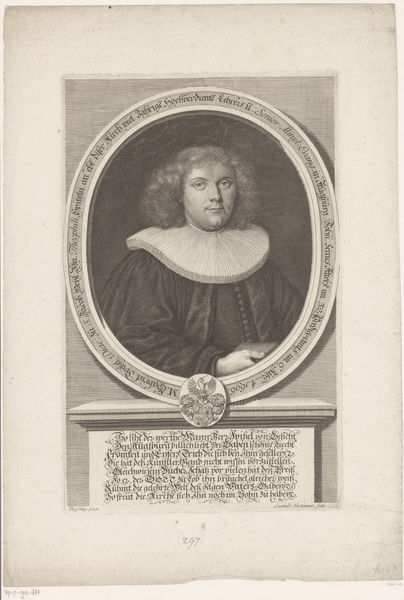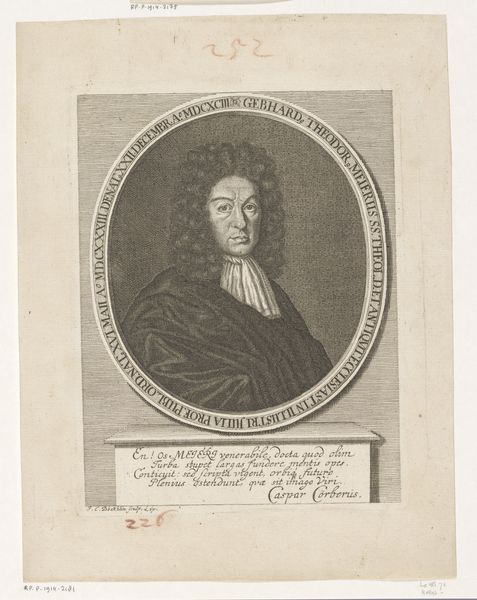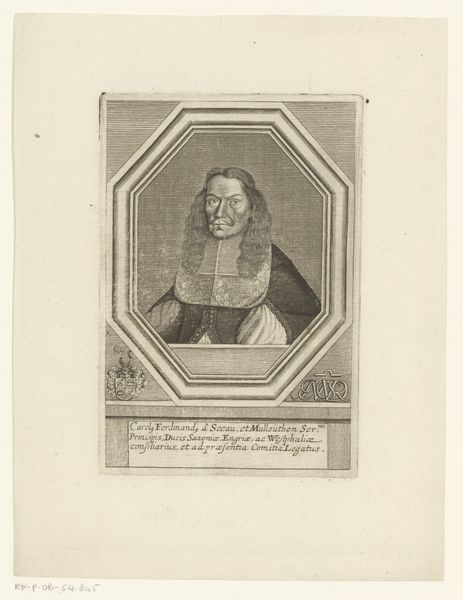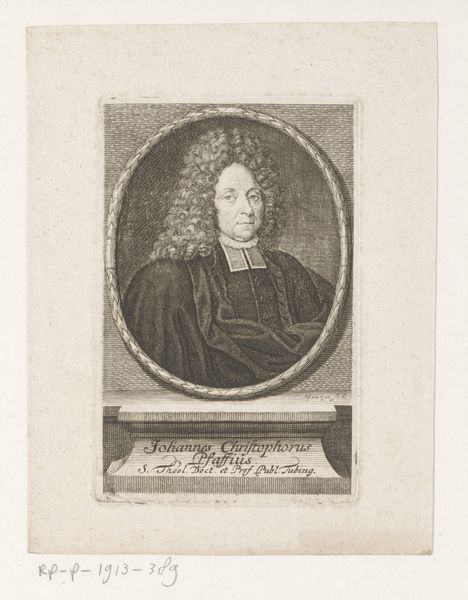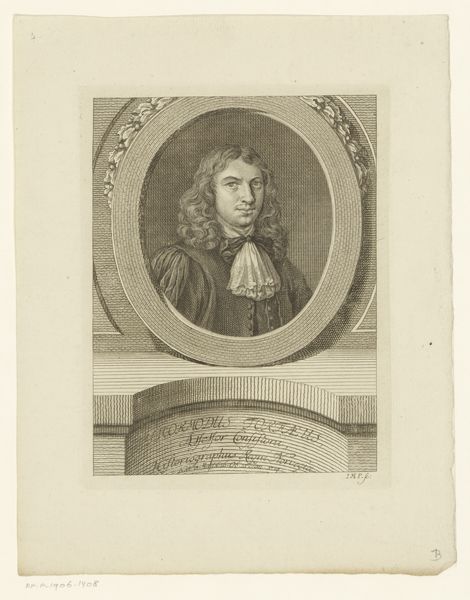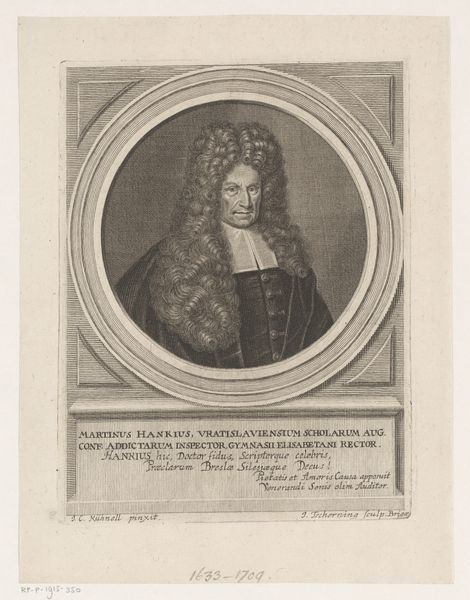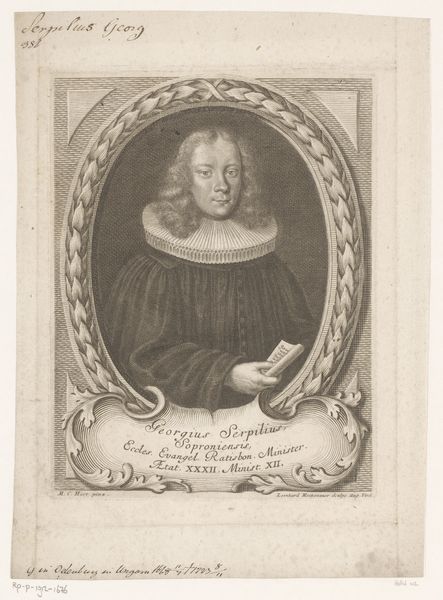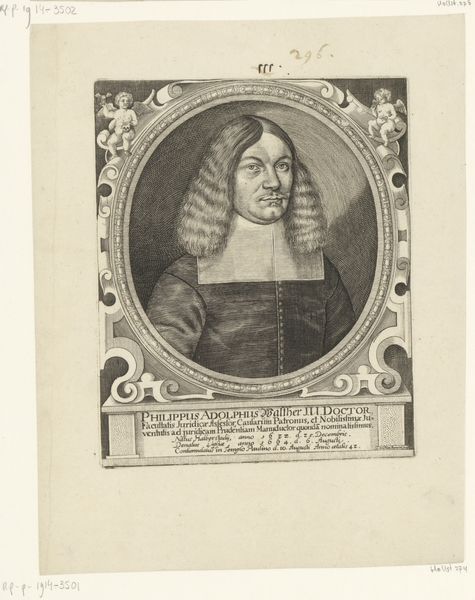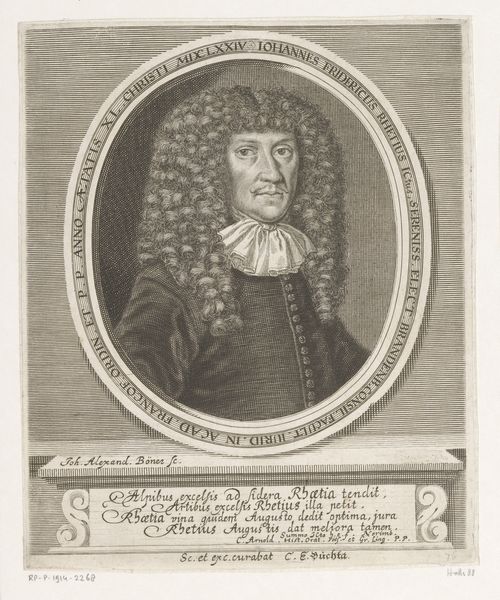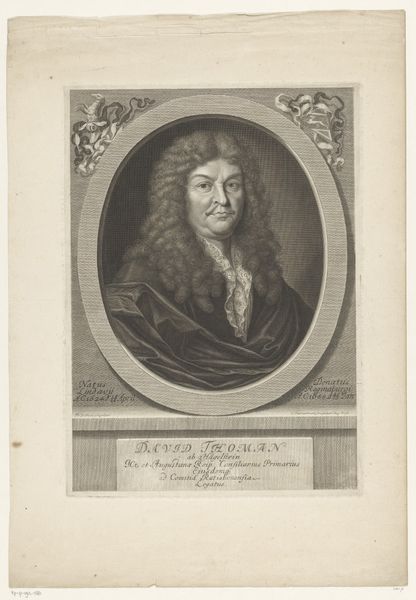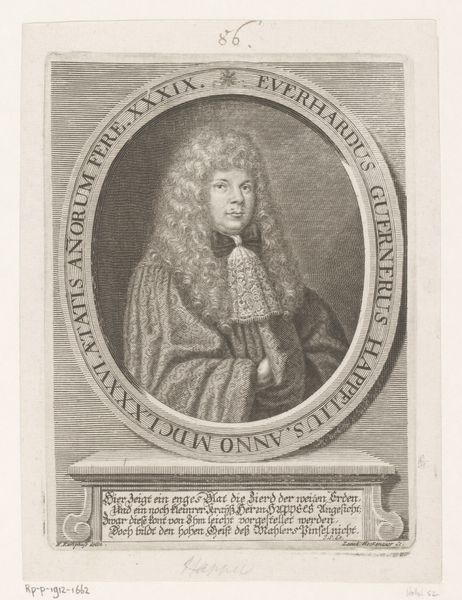
print, engraving
#
portrait
#
baroque
# print
#
figuration
#
history-painting
#
academic-art
#
engraving
Dimensions: height 160 mm, width 109 mm
Copyright: Rijks Museum: Open Domain
Editor: This is a print titled "Portret van Gottfried von Jena," made between 1663 and 1672 by Matthias van Sommer. It’s an engraving, which gives it this incredible detail. The subject's gaze is quite intense. What do you see in this piece, considering the medium? Curator: The means of production of this engraving, particularly its function within 17th-century social structures, strikes me. Consider the labor involved in its creation – the skilled engraver, the quality of the metal plate. Prints like these weren't just art; they were tools for disseminating power. Look at the inscription and framing device; these all contribute to a carefully constructed representation of status, effectively manufactured and circulated through the materiality of print. Editor: So, the *act* of creating and distributing this image, the labor involved, is key? It's more than just a portrait then; it's about the mechanics of image-making and social standing? Curator: Precisely. Think about the context of patronage – who commissioned this, how many impressions were made, and who had access to them. The print transforms Gottfried von Jena into a commodity, an image produced for consumption within a specific social milieu. We need to think beyond artistic expression to the conditions that made this image possible, the networks of exchange, and the control of visual representation in the era. Editor: I never thought about portraiture that way. It’s like peeling back the layers to see the system that made the image, and perhaps the sitter’s status, possible. Curator: Indeed. And that's the value of examining art from a materialist perspective: to reveal the often-invisible forces shaping what we see and how we understand it.
Comments
No comments
Be the first to comment and join the conversation on the ultimate creative platform.
